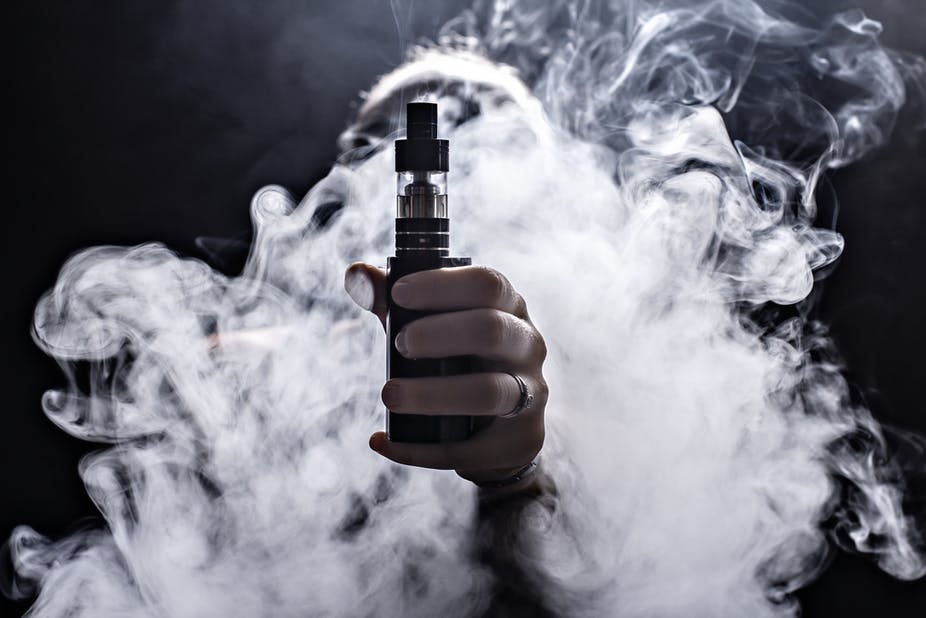3 Things To Know Before Using Nicotine-Free Vapes
Vapes are commonly used by people who have been addicted to cigarettes or nicotine patches in the past and are now looking for a healthier alternative. The working principle of a vape commonly involves a fluid which is known as the e-liquid or the e-juice. There are a number of liquids, mixtures, and chemicals being used as vaping juices today.
Each juice has a different composition and imparts the vape with a different flavour. The vaping apparatus mechanically evaporates this juice into a vapour, which the user can then inhale. In this article, we will walk you through the different ingredients and chemical processes that are involved in the act of vaping and give you a brief rundown of the popular opinion about the pros and cons of this act among researchers.
1. General concerns about Vaping

In its heyday, one of the biggest sources of the widespread popularity of vaping pens and electronic cigarettes was the claim that these vapes are completely safe for the body and that they can give you an alternative to the nicotine smoking experience without all of the latter’s harmful impacts on one’s health.
Today, however, researchers working in this area have contradicted the claims made by the vape manufacturers and indicated that vaping still does have some adverse impacts on the human physiological system.
Yet, even now, there is very little information about the safety hazards of vapes and e-cigarettes, and while we have made some strides in extrapolating the short-term impacts of these practices on our physiology, we still don’t have any idea about the long-term effects they might cause.
In 2019, there was a widespread wave of lung diseases across America, which was later linked to the rampant use of vapes there. However, there still has not been any conclusive study about the role of vapes in this outbreak.
2. Ingredients Used

E-juice is the fluid that is evaporated by a vaping apparatus. It is also commonly known as e-liquid or vaping fluid in a lot of countries. One of the factors which the impact of vaping on a person’s physiology depends on is the particular e-juice that they use and the chemical composition of the e-juice solution.
The ingredients used in an e-fluid have been observed to be different in cases of different manufacturers. Each vaping fluid uses a base liquid that is used as the primary solvent in the vaping apparatus. Some of the most common examples among these base solvents include vegetable glycerine, propylene glycol, and water.
Different manufacturers also add different synthetic additives, preservatives, and flavours into their vaping solutions. When it comes to the usage in packaged food items, most of these components used in vaping fluids come with a Generally Recognized as Safe (GRAS)Trusted Source accreditation. This indicates that the ingredients are safe to be consumed in their true form.
The vaping method, on the other hand, boils and evaporates these components, which brings about a significant change in their chemical composition, thereby nullifying the safety accreditation. Besides, there is no research that can conclusively indicate that using regular food products as vaping ingredients is a safe practice.
3. Common side-effects of Vaping

As mentioned earlier, there is no conclusive information that can indicate the long-term effects caused by the act of vaping. This is primarily due to the fact that the practice of vaping or e-smoking has not been around for more than a decade or two. On top of that, there is very little information about the chemical nature of the ingredients used in vapes when they are incinerated and vaporized.
As such, with little to no empirical data about the lifelong impact of the practice, researchers have only been able to record and tabulate the short-term detriments caused by vaping. Some of the most commonly observed short-term effects are listed below.
- Triggering the immune system: According to a laboratory experiment from 2018, the practice of nicotine-free vaping can elicit an inflammatory reaction in the human immune system. This is extremely dangerous and detrimental to the whole human physiology. People who indulge in the practice of vaping are often observed to have inflammation in their lungs or throat.
Sometimes, if a user uses vapes excessively, they might be afflicted with inflammation in their whole body. Apart from this, a different group of laboratory researchers from the same year came to the conclusion that vaping fluids can trigger an inflammatory reaction in the user’s white blood cells. This can cause further damage to the immune system.
- Discomfort in the mouth: Even though the ingredients used to prepare the vaping solution are all safe to eat and are certified by GRAS Trusted Source, they have been observed to cause irritation in the user’s mouth and their air ducts when in the form of heated vapour. In 2015, a laboratory study concluded that a single puff from a nicotine-free shisha vape could cause irritation in the user’s respiratory system. Some researchers have even claimed that some of the base fluids used in vaping juices can cause cancer when in vapour form.
- Toxicity on a cellular level: The vapour inhaled from a vaping pen or an e-cigarette has been observed to cause severe detriments to the users’ cells. A laboratory study conducted in 2018 found that the vaporized vaping juice has a direct impact on the functioning of the cells within the user’s lungs. The cells in question are tasked with helping prevent infections and allergic reactions in the body from the harmful substances and dust particles present in the air.
The researchers claimed that excessive vaping could kill these lung cells, even without the presence of nicotine. A different study from 2018 concluded that the additives used in vaping solutions could damage the blood vessels present in the user’s heart, giving rise to chronic illnesses such as diabetes and high blood pressure.
Conclusion
Suffice to say, nicotine-free vapes can give rise to severe side effects in the human physiological system. While the chances of near-fatal illnesses such as cancer may be lower than in the case of regular cigarettes, these vapes can still cause a lot of chronic problems in your body. However, it is also important to note that most of these conclusions are based on laboratory findings and not real-life observations.
As such, there might be some fallacies in the extent of side-effects that a lot of studies may suggest. To date, we have very little information about the long-term impacts of the practice of vaping. For the best quality nicotine-free vapes, be sure to visit vapingvibe.com.
